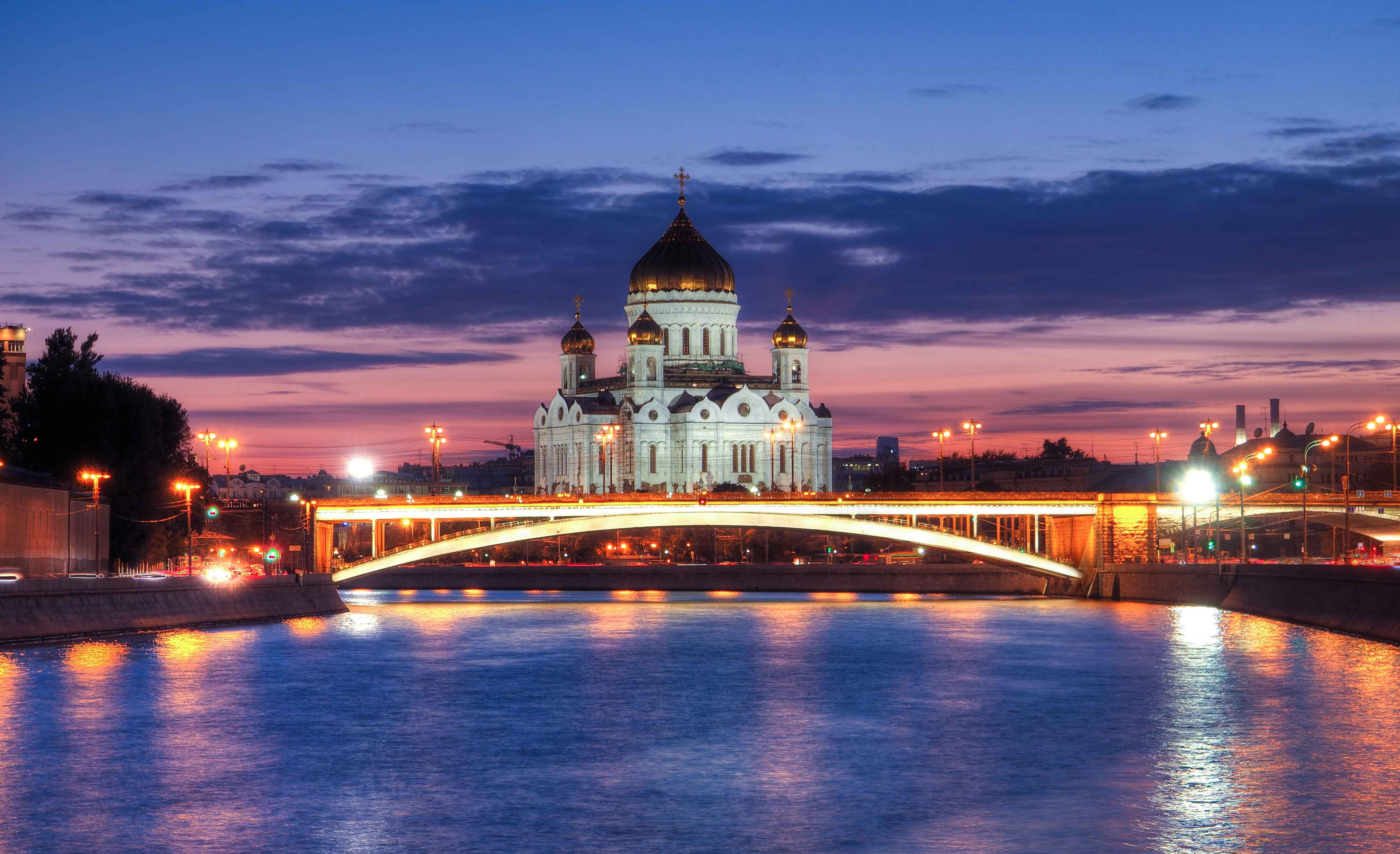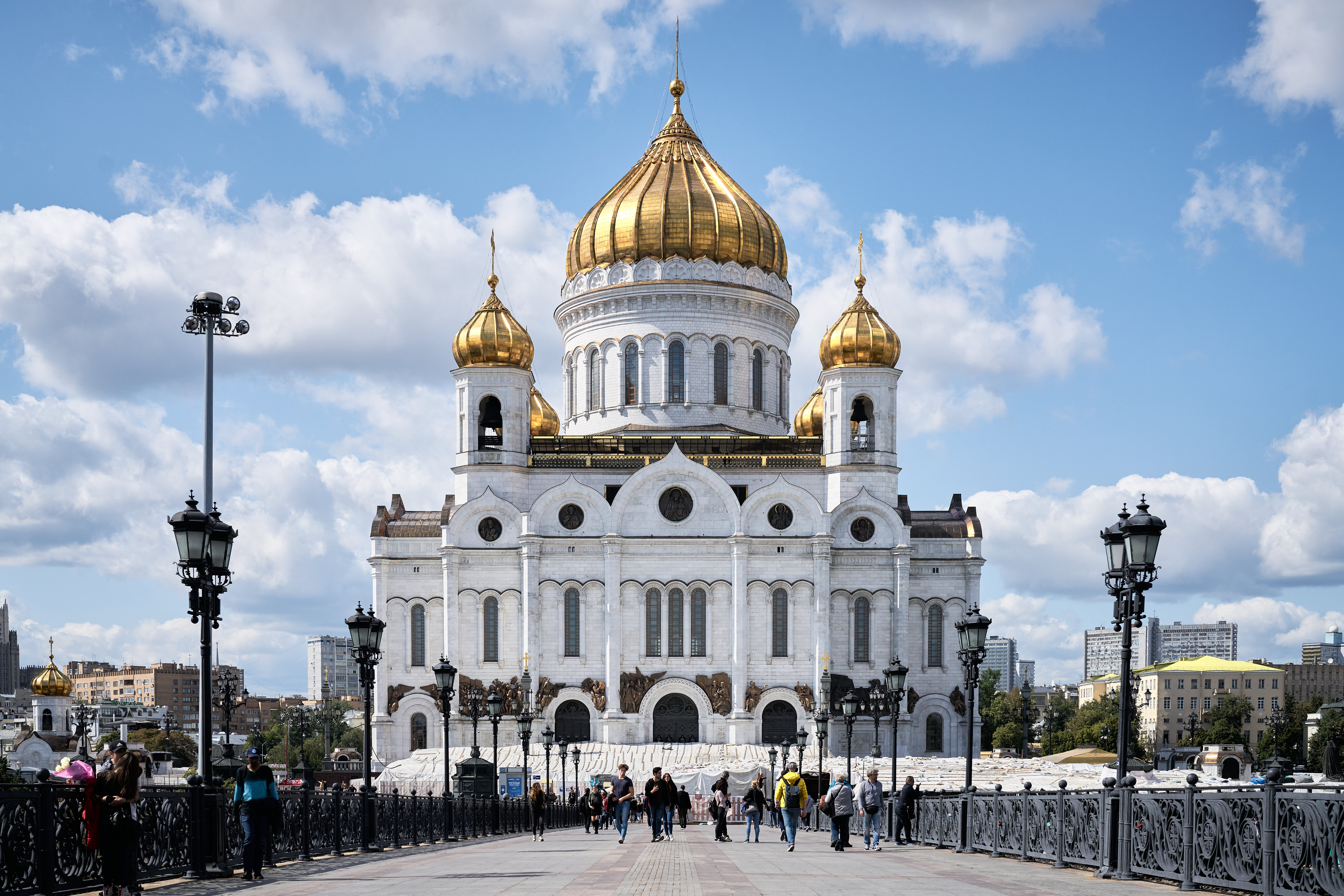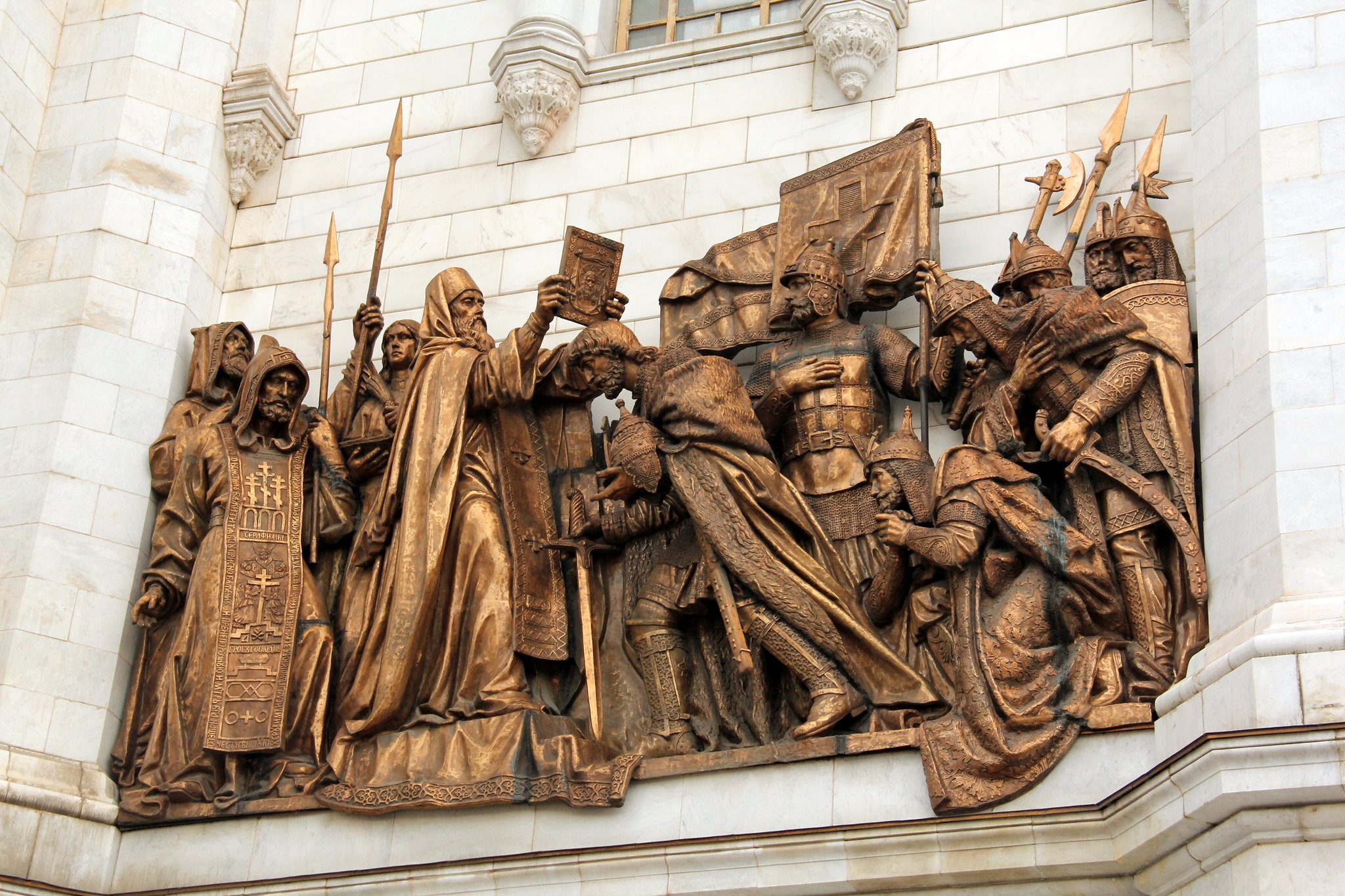The Cathedral of Christ the Saviour, located on Volkhonka Street in Moscow, is a monumental Orthodox church built in commemoration of the victory in the Patriotic War of 1812. The first design was prepared in 1814 by A. L. Vitberg but was never completed. The present structure was founded in 1839 according to the design of K. A. Ton.
With its five-domed traditional plan, Byzantine-style vaulting system, and decorative elements characteristic of Moscow architecture, the cathedral is regarded as a symbol of 19th-century Russian national style. It was demolished by the Soviet authorities on December 5, 1931, and reconstruction began in 1990. The cathedral was reopened for worship in 2000. Today, it stands as one of Russia’s principal religious and cultural centers.

Cathedral of Christ the Saviour (flickr)
History
The idea of constructing the Cathedral of Christ the Saviour emerged following Russia’s victory in the Patriotic War of 1812. On December 25, 1812, Emperor Alexander I signed a high manifesto decreeing the construction of a church “in the name of Christ the Saviour” to honor the triumph of the Russian army and the liberation of the country. The manifesto stated that a church should be built in Moscow “to preserve the eternal memory of the unparalleled devotion and loyalty of the Russian people to their faith and their homeland.”【1】
In accordance with this decree, a design competition was held in 1814. Among the participants—A. N. Voronikhin, D. Quarenghi, V. Stasov, and others—the project submitted by A. L. Vitberg was selected as the winner. The foundation stone was laid on December 12, 1817, on the Sparrow Hills (Vorobyovy Gory); however, construction was halted by order of the Senate in 1827. A second competition held in 1829 produced no result, and in 1830 Emperor Nicholas I entrusted the cathedral’s design to K. A. Ton. Ton proposed building the church on the grounds of the Alekseyev Monastery, and after the establishment of a special commission in 1837, a new foundation was laid in 1839.
The construction process lasted approximately forty-four years. From the 1840s onward, work on the walls and domes progressed, followed by the completion of interior decoration and ornamentation. Prominent artists of the period participated in designing the interior and embellishments. The cathedral was consecrated and opened for worship on May 26, 1883.
After the Revolution of 1917, the implementation of anti-religious policies led to the removal of surrounding monuments, and religious services were gradually restricted during the 1920s. In 1931, the Soviet authorities allocated the site for the construction of the Palace of the Soviets (Dvorets Sovetov) and decided to demolish the cathedral. Dismantling began on August 18, 1931, and on December 5, 1931, the structure was completely destroyed by explosion.
Following the demolition, work began on the Palace of the Soviets, but the project was never completed due to the outbreak of war. In the 1940s, the metal framework prepared for the building was dismantled, and the project was officially cancelled in 1960. In 1958, an open-air swimming pool named Moskva was constructed on the same site.
By the late 1980s, public movements advocating the cathedral’s reconstruction had gained momentum. In 1990, the Holy Synod of the Russian Orthodox Church initiated the project to rebuild the cathedral, and a cornerstone was laid that same year on Volkhonka Street. Reconstruction was approved by the Moscow city authorities in 1992 and began in 1994. The work was completed by the end of 1999, and the cathedral was consecrated by Patriarch Alexy II on December 31, 1999. It was reopened for worship in 2000.

Cathedral of Christ the Saviour (flickr)
Architectural Features
The Cathedral of Christ the Saviour was constructed according to a traditional five-domed plan. In K. A. Ton’s design, the Byzantine-inspired vaulting system was combined with architectural elements characteristic of 15th–16th-century Moscow architecture. The main structure consists of a large cubic mass symmetrically arranged on all four sides. The façades differ only in the themes of their relief compositions, while overall symmetry is maintained in the design.
The exterior decoration includes 48 reliefs created by A. V. Loganovsky, N. A. Ramazanov, and P. K. Klodt. The reliefs on the entrance doors were executed based on models by F. P. Tolstoy. The marble cladding and exterior ornamentation program emphasize the building’s monumental character.

Exterior Decoration (flickr)
After K. A. Ton’s retirement, the interior layout of the Cathedral of Christ the Saviour was redesigned by architects A. I. Rezanov and L. V. Dal. In the new arrangement, the earlier classical decorative approach was abandoned, and the wall surfaces were divided into sections referred to as a “panel system.” Within the architectural frames, composed of marble cladding in various colors, paintings depicting the earthly life of Christ were placed.
The cathedral’s iconostasis (a partition wall adorned with icons) is located in the eastern part of the building and designed in the form of an octagonal marble chapel. It is crowned with a gilded bronze tent-shaped canopy, reaching a total height of 26.6 meters.
A two-story gallery surrounds the main nave: the upper level contained additional altars, while the lower level housed a museum dedicated to the documents and memorabilia of the War of 1812. On the first floor, 177 marble plaques were inscribed with accounts of significant events of the war, imperial decrees, and the names of soldiers.
During the reconstruction of the cathedral in the 1990s, the original architectural drawings were used as a basis. The new structure was built on an extensive stone platform in accordance with Ton’s original plan. Within this platform, the Lower Church dedicated to St. Nicholas of Myra, the Cathedral of Christ the Saviour Museum, and the church assembly hall were arranged.


